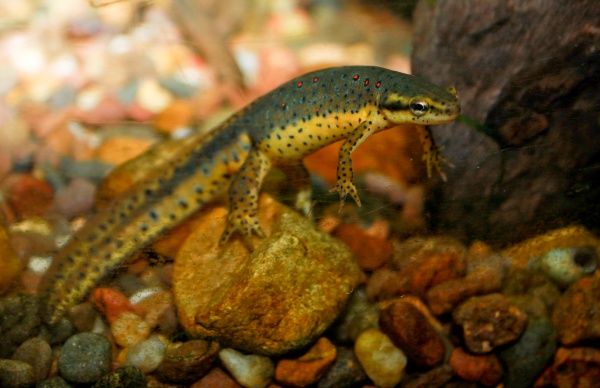Facts About Eastern newt
The eastern newt is a fascinating amphibian commonly found in eastern North America. These little creatures inhabit various aquatic environments such as lakes, ponds, streams, and moist forests. One of their most remarkable abilities is the production of a toxin called tetrodotoxin, which renders them unpalatable to predators.
Eastern newts have notably long lifespans for amphibians, ranging from 12 to 15 years, and typically grow to about 5 inches in length. Many enthusiasts enjoy keeping them as pets, particularly during their bright orange juvenile stage, known as the red eft. There are several subspecies of eastern newts, including the red-spotted newt, broken-striped newt, central newt, and peninsula newt.
These newts undergo several distinct life stages: they begin as aquatic larvae, transform into red efts (a terrestrial juvenile stage), and finally mature into aquatic adults. The red eft stage is especially striking due to its vivid coloration, which serves as a warning to potential predators. Eastern newts are also adept navigators, employing magnetic orientation to find their way home.
They thrive in damp, muddy environments and have a diverse diet that includes insects, mollusks, crustaceans, and amphibian eggs.
However, eastern newts face several conservation challenges. Habitat fragmentation, climate change, invasive species, over-exploitation, and diseases such as Batrachochytrium dendrobatidis and Ranavirus pose significant threats. They are also susceptible to the chytrid fungus Batrachochytrium salamandrivorans. Though they are widespread, these issues necessitate concerted conservation efforts to ensure their survival in the wild.

 United States
United States